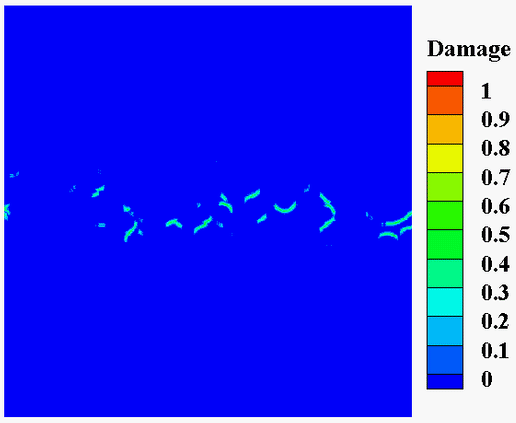Welcome to IMPACT Laboratory in the Department of Mechanical and Aerospace Engineering (MAE) at the Indian Institute of Technology Hyderabad (IITH)! Here we develop engineering solutions through an integrated multiscale framework to transform the design methodology for high-performance structures and materials.
We aim to address the scientific and engineering challenges in developing multifunctional materials through novel, advanced experimental and computational frameworks. Our lab focuses on the fundamental understanding of physical processes at various length (nm-mm) and time (ns-ms) scales, governing the dynamics of materials that give rise to their multi-functional behavior at the structural scale.
You will find a brief introduction to our members, research, and publications on this website.
Research Focus Areas
-
Raman Spectroscopy
-
Micro/Nano Impact
-
Micro/Nano Indentation
-
Laser Induced Hypervelocity Impact
-
High-speed Imaging
-
Composite Materials
-
Multi-functional Materials
-
Polymer Nano-Composite
-
Poly-crystalline Materials
-
Metallic Alloys
-
Multi-scale Modeling
-
Computational Homogenization
-
Phase-Field Fracture
-
Shock Waves & Spallation
-
Damage/Fracture and Failure
OUR LATEST RESEARCH
Feature Article on the cover of the Journal of Applied Physics

A combined Finite Element - Material Point (FEMaP) simulation of wave propagation under a Hypervelocity impact in a particle reinforced composite.

The video shows the delamination (Experimental (top) and Simulation (bottom)) of Ammonium Perchlorate particle embedded in the Hydroxyl-Terminated Poly-butadiene matrix under a tensile load. The HTPB/AP composite is an energetic material used as a solid propellant.
In this work, we study the microstructure dependent impact-induced failure of HTPB–HMX energetic material using the cohesive finite element method (CFEM). The CFEM model incorporates experimentally measured viscoplastic constitutive behavior, experimentally measured interface level separation properties, and phenomenological temperature increase due to mechanical impact based on viscoplastic and frictional energy dissipation.
The impact-induced viscoplastic energy dissipation and the frictional contact dissipation at the failed HTPB–HMX interfaces are found to have a significant contribution toward local temperature rise. Microstructures having irregularly shaped HMX particles with sharp edges indicating that the specific particle surface area has a higher role in temperature rise than particle shape and sharp edges.
Regions within the analyzed microstructures near the HTPB–HMX interfaces with a high-volume fraction of HMX particles were found to have the maximum temperature increase.

Non-ordinary State-based Peridynamic (NoSP) simulation of damage evolution under high-velocity tensile loading in an HTPB-AP composite.

A Mechanical Raman Spectroscopy (MRS) set-up to obtain stress maps in the material under load. The sample shown is a single Ammonium Perchlorate particles embedded in the Hydroxyl-Terminated Poly-butadiene matrix. The HTPB/AP composite is an energetic material used as a solid propellant. The composition of the above-shown composite is 80% AP and 20% HTPB. MRS measurements are used to measure in-situ stress and temperature for thermo-mechanical characterization of the particle-binder interface.

